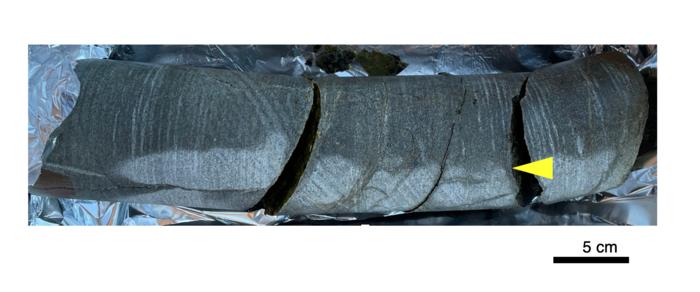A 2-billion-year-old rock has been unearthed in South Africa – and if its advanced age wasn’t enough to knock your socks off, it’s also home to pockets of microbes that are still alive and thriving. Having been around for eons, these are the oldest examples of living microbes ever found within ancient rock.
“We didn’t know if 2-billion-year-old rocks were habitable. Until now, the oldest geological layer in which living microorganisms had been found was a 100-million-year-old deposit beneath the ocean floor, so this is a very exciting discovery,” Yohey Suzuki from the University of Tokyo, lead author of a study presenting the new discovery, said in a statement.
“By studying the DNA and genomes of microbes like these, we may be able to understand the evolution of very early life on Earth.”
The microbes were found within a sealed fracture in the ancient rock, which was excavated from the Bushveld Igneous Complex in South Africa – a rocky intrusion that formed when magma slowly cooled below the Earth’s surface. The enormous complex covers an area roughly the size of Ireland, and contains some of the richest ore deposits on Earth including around 70 percent of the world’s mined platinum. It has remained relatively unchanged since its formation, providing perfect conditions in which ancient microbial life can survive.
Such organisms, living far below the Earth’s surface, evolve incredibly slowly, and have an exceedingly slow metabolic rate, meaning they can persist in igneous rocks over geological time scales – for up to 2 billion years as the latest research has demonstrated.

The 30-centimeter-long rock core sample where ancient microbes were discovered.
Image credit: Y. Suzuki
With the aid of the International Continental Scientific Drilling Program, the researchers drilled 15 meters (49 feet) below the ground to retrieve a 30-centimeter (12-inch) long rock core sample. Upon closer inspection, the team found living microbial cells tightly packed into fractures within the rock, isolated from the outside environment by clay-filled gaps.
To confirm that the microbes were native to the rock sample, and were not contaminants from the drilling or examination processes, they stained the DNA of the microbes and used infrared spectroscopy to look at the proteins within them as well as those in the surrounding clay – a technique they had pioneered back in 2020. This enabled them to determine that the archaic organisms were alive and not contaminated.
As the oldest living microbes ever unearthed in rock samples, the implications of their discovery are far-reaching – potentially even as far as the Red Planet.
“I am very interested in the existence of subsurface microbes not only on Earth, but also the potential to find them on other planets,” said Suzuki.
While Martian rocks are generally much older (20 billion to 30 billion years old), “NASA’s Mars rover Perseverance is currently due to bring back rocks that are a similar age to those we used in this study. Finding microbial life in samples from Earth from 2 billion years ago and being able to accurately confirm their authenticity makes me excited for what we might be able to now find in samples from Mars.”
The study is published in the journal Microbial Ecology.
Source Link: 2-Billion-Year-Old Rock Found Harboring Microbes – And They’re Still Alive